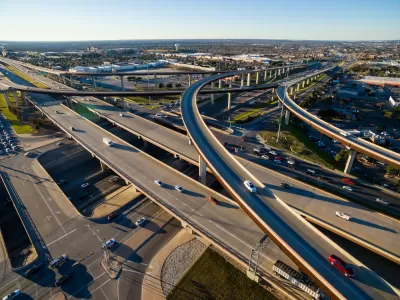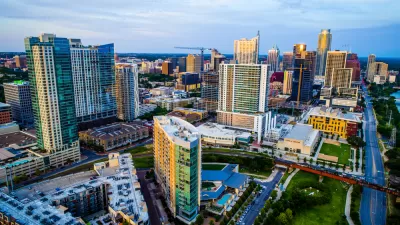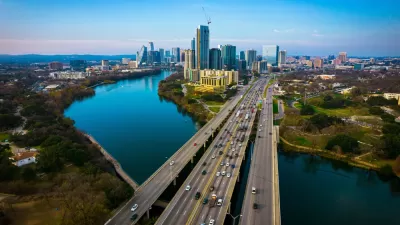A proposal to widen I-35 has drawn criticism from community members who want to see the city shift away from car-centric development.

Austinites are engaged in a heated debate over the Capital Express Project, a controversial "$7.5 billion plan to expand the abhorred stretch of I-35 that snakes through the center of Austin" by adding two levels of tunnels and adding several new lanes. As reported by David Leffler, transportation advocates argue that the plan is "the blueprint for an ineffective, outdated strategy that would only spur sprawl" and induce more traffic and car-centric development. "If allowed to move forward, TxDOT’s proposed expansion will engulf nearly 150 homes and businesses along the interstate."
Opponents of the expansion plan have proposed several alternatives. "For context, there are three community-drawn proposals that would limit the highway’s existing footprint, downsize it to an urban boulevard, or even incorporate Klyde Warren–inspired green spaces, but the state has shown little interest in entertaining them."
Yet just two years ago, "Austin voters approved a $7 billion mass transit bond," signaling that "residents don't want bigger highways." Austin Mayor Pro Tem Natasha Harper-Madison says city leaders must "understand that [the project] will impact so many core aspects of our city’s future" and "make a careful, informed, and thoughtful decision." Harper-Madison encourages residents to participate in TxDOT's public comment period "because transportation touches so many parts of our daily lives, from the way we explore our cities and the neighbors we live nearby to our ability to connect with people from different communities, income levels, and cultures."
FULL STORY: “No wider, no higher”: Inside Austin’s red-hot fight over I-35 expansion

Maui's Vacation Rental Debate Turns Ugly
Verbal attacks, misinformation campaigns and fistfights plague a high-stakes debate to convert thousands of vacation rentals into long-term housing.

Planetizen Federal Action Tracker
A weekly monitor of how Trump’s orders and actions are impacting planners and planning in America.

In Urban Planning, AI Prompting Could be the New Design Thinking
Creativity has long been key to great urban design. What if we see AI as our new creative partner?

Pedestrian Deaths Drop, Remain Twice as High as in 2009
Fatalities declined by 4 percent in 2024, but the U.S. is still nowhere close to ‘Vision Zero.’

King County Supportive Housing Program Offers Hope for Unhoused Residents
The county is taking a ‘Housing First’ approach that prioritizes getting people into housing, then offering wraparound supportive services.

Researchers Use AI to Get Clearer Picture of US Housing
Analysts are using artificial intelligence to supercharge their research by allowing them to comb through data faster. Though these AI tools can be error prone, they save time and housing researchers are optimistic about the future.
Urban Design for Planners 1: Software Tools
This six-course series explores essential urban design concepts using open source software and equips planners with the tools they need to participate fully in the urban design process.
Planning for Universal Design
Learn the tools for implementing Universal Design in planning regulations.
planning NEXT
Appalachian Highlands Housing Partners
Mpact (founded as Rail~Volution)
City of Camden Redevelopment Agency
City of Astoria
City of Portland
City of Laramie





























